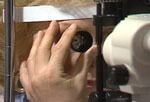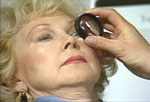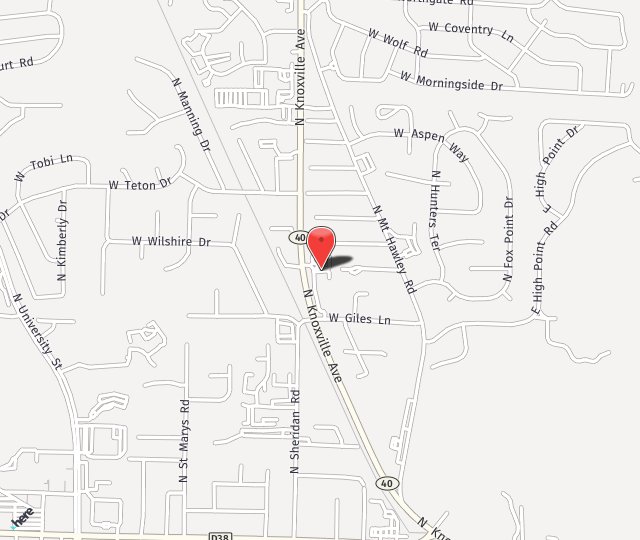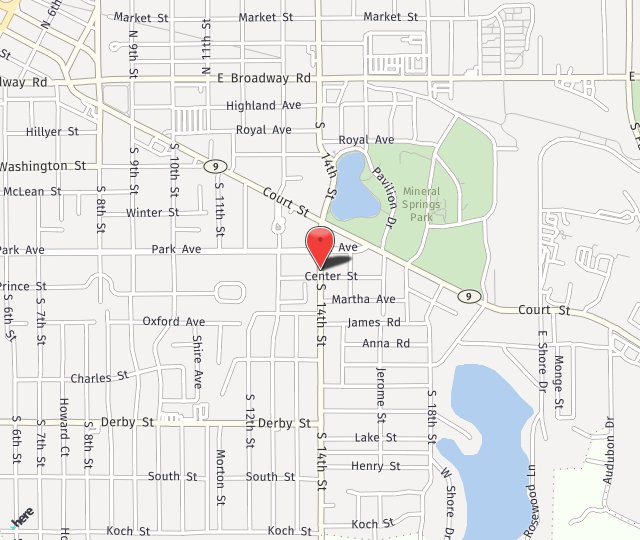
If you have ever been to the eye doctor you have most likely underwent a glaucoma test to determine your inner eye (intraocular) pressure shortened to IOP. This test can be done in several ways. First and most common at optometry offices is the dreaded “puff-of-air” test, technically called the non-contact tonometry, or NCT. The machine calculates your IOP based on the eye’s resistance to the puff of air. The second and third ways to determine IOP are by using different methods of touch tonometry either with a tonopen that is hand held or applanation tonometer which is mounted on the slit lamp. All three testing options are painless yet give your eye doctor very important information to help you continue seeing clearly far into the future.
Glaucoma is a disease group that can cause optic nerve damage, which in turn can lead to loss of vision. The optic nerve carries the images we see to the brain. Without treatment people with glaucoma slowly lose their peripheral vision and can eventually become blind. Although there are many diverse types of glaucoma we are going to talk about open-angle versus closed-angle glaucoma.
Open-Angle glaucoma is the most common form in the United States. It is caused by a liquid in the eye called aqueous humor that circulates in the front portion of the eye. Ideally the same amount of aqueous humor produced is equal to the amount draining out of the eye. When the aqueous humor is overproduced or is blocked in its flow out of the eye, pressure increases causing glaucoma. Usually open-angle glaucoma has no symptoms until later stages of the disease. Vision loss most commonly starts in the peripheral vision and gradually works into central vision.

Closed-Angle glaucoma is caused when the iris is pulled into drainage angle preventing fluid to exit. Pressure builds very quickly and causes pain, blurry vision, headaches, halos and nausea. This is an emergency and the patient should be seen immediately. Medications are started but this is most commonly corrected with a laser treatment called peripheral iridotomy (PI). PI is where a small hole is made in the iris to create a place for fluid to drain. Pressure goes down quickly after laser treatment. Once someone is diagnosed with closed-angle glaucoma they need to pay close attention to medications that they take and be diligent to see their eye doctor regularly.
Most glaucoma is treated with eye drops called prostaglandins. They are most popular because of convenient, once-a-day dosing and increase aqueous outflow. Some patients require more than one medication based on severity of the disease seen in the eye. In addition, laser treatments can be performed in the office to help increase outflow multiple times throughout the course of the disease. In some cases, the laser helps the drops to become more effective and occasionally patients stop medications altogether. In severe cases, a shunt can be implanted surgically to increase outflow. This is usually done in very advanced cases of glaucoma. Your doctor will decide what drops or techniques will work best for your individual case. New on the horizon are slow releasing glaucoma medication devices, such as a ring insert that slowly releases medication. This advancement will take the responsibility away from the patient allowing better medication compliance.
Over the years eye doctors have found that there are a few population demographics that are at higher risk of getting glaucoma such as growing older, having a family history of glaucoma, having African or Spanish ancestry, thin corneas and systemic problems such as diabetes and poor circulation. Even if you do not fall in any of these categories yet, your eye doctor will still check your pressure because the most common type of glaucoma has no real symptoms until it is too late.

Once you are diagnosed with glaucoma or as a glaucoma suspect your eye doctor may require additional tests to be performed so they can adequately treat your condition. One is gonioscopy to inspect discharge angles in the eye. This test is done with a mirror-like looking lens while in the exam chair with the doctor. Your eye doctor may also look by ophthalmoscopy to evaluate the optic nerve and perform peripheral vision of each eye. Other tests may be needed such as optic nerve photography, computerized imaging or more in-depth visual field tests. Glaucoma is a medical condition that requires several visits throughout the year to monitor pressure and medication efficiency.
Please call Bond Eye Associates to schedule your yearly health vision exam with confidence knowing that they have been a trusted, locally owned, medical practice for over 40 years. They are accepting new patients in both of their locations: Peoria and Pekin IL. Please call 309-692-2020 to schedule an appointment or click here.


